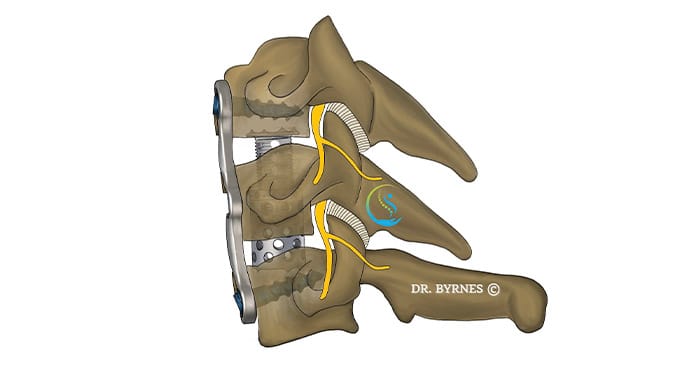
Cervical corpectomy is a surgical procedure that involves removing one or more vertebral bodies in the cervical spine to alleviate spinal cord and nerve root compression.
When necessary for spinal stability, this surgery is often accompanied by supplementary posterior fixation. This article will discuss the indications, techniques, benefits, and potential risks of cervical corpectomy.
Cervical corpectomy is primarily indicated for patients suffering from severe spinal cord compression due to various conditions, including degenerative disc disease, cervical spondylosis, spinal stenosis, herniated discs, and spinal tumours.
Symptoms that may warrant this procedure include neck pain, radiculopathy (nerve root compression), myelopathy (spinal cord compression), and muscle weakness or numbness in the arms or hands.
Cervical corpectomy is performed under general anaesthesia with the patient positioned prone on the operating table. The procedure typically involves the following steps:
Cervical corpectomy offers several advantages to patients suffering from severe spinal cord compression, including:
As with any surgical procedure, cervical corpectomy carries potential risks, including:
Cervical corpectomy is an effective surgical treatment for severe spinal cord compression in the cervical spine, providing significant relief from neurological symptoms and potentially improving the patient's quality of life.
Often, the goal of surgery is to prevent deterioration in spinal cord function. However, potential risks and complications should be carefully considered and discussed with the patient and surgeon before proceeding with the surgery.
Proper patient selection, meticulous surgical technique, and comprehensive postoperative care can significantly improve outcomes and overall patient satisfaction.
